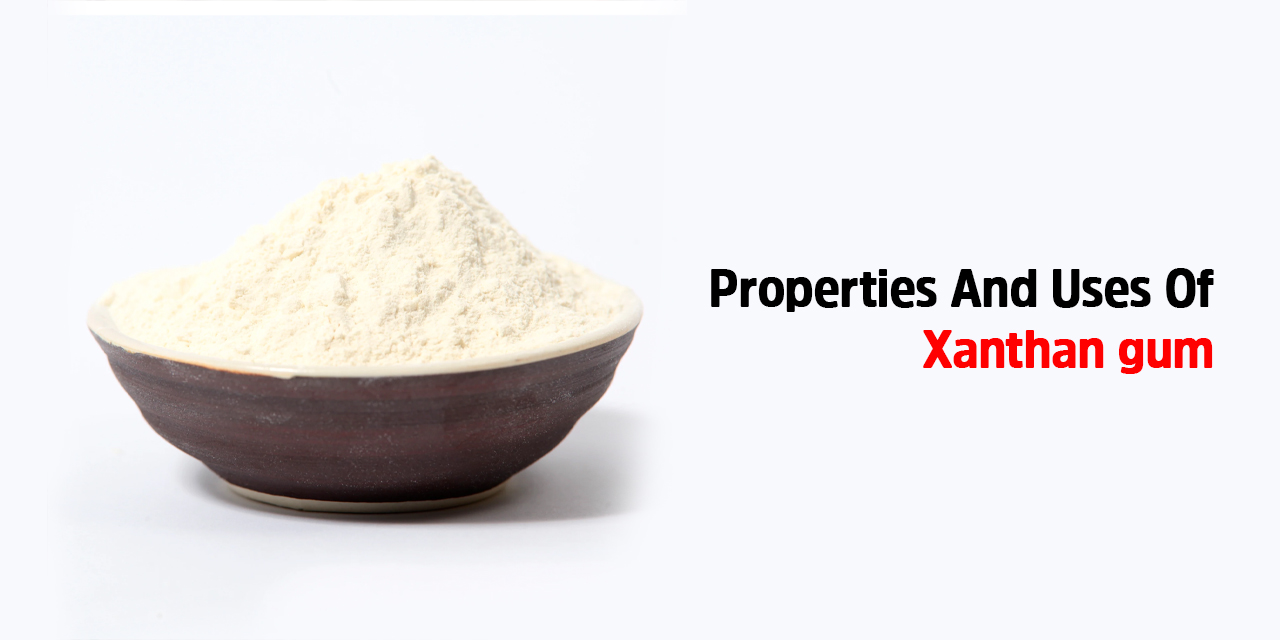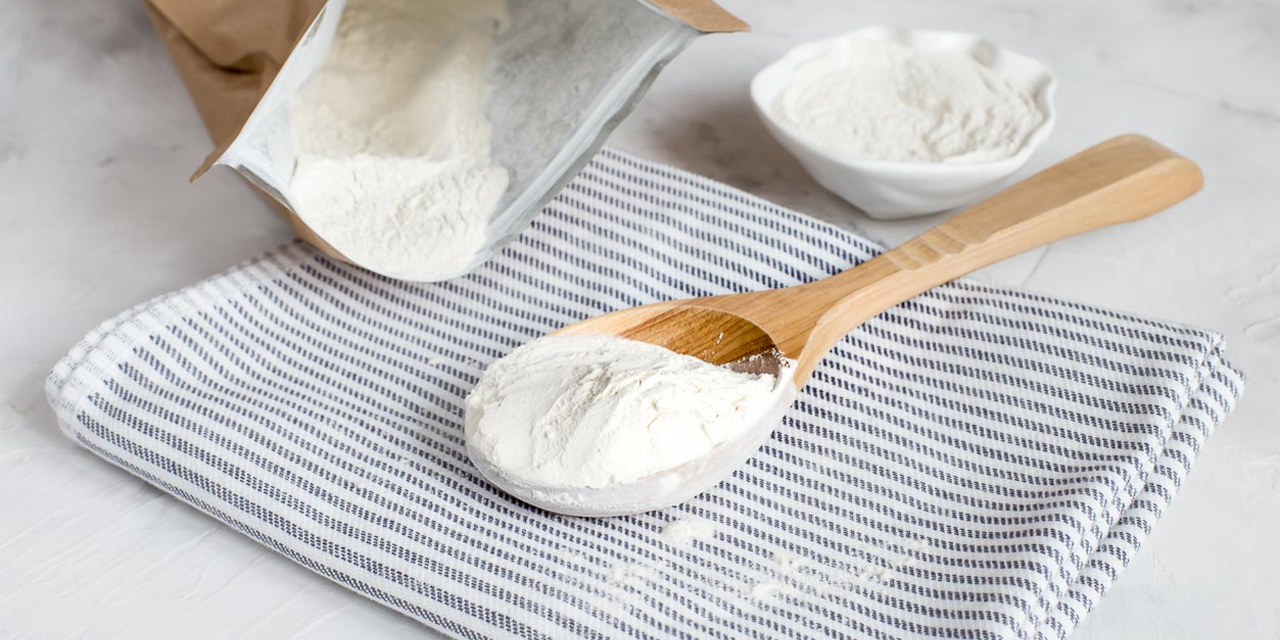Properties And Uses Of Xanthan Gum : All You Need to Know

Xanthan Gum is a biopolymer with a high molecular weight that offers great rheology control to cater to the applications like brine, drilling, fluids, etc. Since they are non-hazardous, you can safely use them in many industrial applications.
They readily disperse and combine with water under minimum shear conditions with no lump formation, unlike the other non-dispersible polymers. This microbial polysaccharide fermentation product is widely used as a stabilizer, gel thickener, film forming agent, sizing agent, thickener, stabilizer, in the food industry as a food additive, and so on.
The recent rise in demand for Xanthan gum in various industries like biomedical applications, food applications, and most importantly paint industries, has made the Xanthan Gum Suppliers in India concentrate more on the distribution of this amazing chemical.
In this blog, let’s discuss in detail the properties, benefits, Xanthan gum production, and uses of Xanthan Gum in industries.
Properties of Xanthan Gum
Xanthan gum got its name from a species of bacteria that contributes to the process of fermentation. This bacteria, also called Xanthomonas Campestris, is responsible for forming black dots on food products or cauliflower, broccoli, and various leafy vegetables.
The chemical acts as the most superior biological glue that encompasses suspension, thickening, stability, and amplification. Here are the unique functional properties of Xanthan gum that make it a popular pick among various industries.
1. Suspension and emulsification
The chemical exhibits a great suspending effect on oil droplets and insoluble solids. The molecules of Xanthan gum form ribbon-like bonded spiral copolymers that further give shape to a weak network structure similar to glue. Xanthan gum uses powerful emulsification stabilization and a high rate of suspension.
2. Thickening
Xanthan gum solution offers low concentrations and increased viscosity. Xanthan aqueous solution has a higher viscosity, i.e., 0.2% more than almost every water soluble colloid. Hence it is an effective thickener.
3. Viscosity
Xanthan gum solution usually has great viscosity during low shear or static conditions. During high shear, Xanthan gum lowers viscosity, however, the molecular structure remains the same. Once you reduce the shearing force, this restores the viscosity of the solution.
4. Heat stability
The viscosity of Xanthan gum solution does not differ much with the temperature change. Usually, natural polysaccharides change viscosity while heating, however, the behavior of xanthan gum solution offers thermal stability and remains unchanged between 10 and 80°C. Even at the lower concentration of the aqueous solution, the viscosity remains stable while the temperature range is high.
5. Stability to alkali and acid
Xanthan gum solution remains stable with acid and alkali, the viscosity will not get affected anywhere between 5 to 10 pH values.
6. Stability to salt
Xanthan gum offers a great combination with mixtures of Xanthan gum and saline solutions and shows unchanged viscosity when they react with a salt solution.
7. Stability to enzymatic hydrolysis
Xanthan gum has a stable double helix chemical structure, which makes it present strong anti-enzymatic and anti-oxidation properties. Several enzymes like amylase, protease, cellulose, and hemicellulase cannot degrade Xanthan gum.
Also Read: Pigments for Nail Polish – Bansal Trading Company
How does it work?
Xanthomonas Campestris culture (bacterial fermentation) contributes to the production of Xanthan gum through the fermentation process of sugar to develop a broth-like substance. When you add alcohol to it, this results in solidification. Once you dry this solid compound, you get the Xanthan gum powder. The simple sugars you use to make Xanthan gum can be sourced from lactose, corn, sugarcane, or wheat.
You can disperse Xanthan gum to cold water and hot liquids. There are many grades of gum available depending on the needs of industries. The xanthan gum powders have a high tendency to create agglomerates when you add them to water. There are various dispersion and hydration techniques used to overcome this reaction. This may vary based on ingredients used, the concentration of Xanthan gum, the extent of industrial production, etc.
The working process to make viscous Xanthan gum solution is as follows:
In an agitated vessel, you can slowly add the Xanthan gum powder to the vortex. Allow the product to hydrate with continuous dispersed mixing.
You can pre-mix Xanthan gum with other powdered ingredients to minimize agglomerate formation that supports particle separation.
Likewise, you can disperse the gum to non-aqueous phase liquids like alcohols, oils, or glycols. You can finally add them to the aqueous phase to leave the gum for hydration for the required concentrations of Xanthan gum.
Also Read: What is Epoxy Flooring? Applications and Advantages of Epoxy Flooring
Uses of Xanthan Gum
Chemical suppliers in Delhi deliver Xanthan gum due to its widespread demand and the various uses that cater to the industries as shown below. Here are the various applications of Xanthan gum that aid in the production of paints, and their improved efficiency upon usage.
-
Paint thickeners
The water-based dispersion paints popularly called acrylic paints or stable emulsion paints mainly include the application of Xanthan gum as a binder ( a film-forming element), pigments (to provide color to the paint), water, and various additives. Additives are the core constituents in the paint formulation process. The thickeners and stabilizers have required rheological characterization properties to contribute to the product stability.
When you mill the pigment with water and the required additives to gain accurate granule size for colloidal dispersion, it forms pigment paste. To give the ideal covering power, the colloidal dispersion should result in ca. 5 to 1000 nm granule size when you consider inorganic pigments. To adjust the viscosity of pigment paste, you add thickeners.
This stabilizes the suspension when storing the dispersion paints and plays the role of an anti-syneresis agent to contribute to high water binding capability. Xanthan gum is more pseudo plastic, which means they go for thinning at higher shear stress rates, this is why they support easy paint application, particularly while you spray. Based on the application required, many thickeners are available. Xanthan gum uses its features to support industrial applications that need high yield value.
-
Paint stabilizers
Xanthan gum is a well-known stabilizer that is soluble in cold and hot water. It remains stable with various pH ranges and is usually inert to the other chemicals.
When you add Xanthan gum to water, it alters the rheological properties of pseudo plastic from Newtonian, thereby forming high viscosity when at rest and under low shear rates.
This affects the stabilization of paints when you store them, to give the best adherence to the walls. While you apply the paint with a brush, spray, or a roller, Xanthan gum thus gives a shear rate thinning experience.
-
Latex paints
Xanthan gum improves the product fluidity in water-based paints and latex paints. It can suspend the pigments and smoother the painting surface even while you paint on a vertical plane. Xanthan gum can control paint and coatings, keep up the diffusion and avoid sinking.
It can ideally improve and modulate the concrete performance, minimize the water consumption of concrete, and enhance its fluidity with the regulation. You can use it to adjust the setting time for concrete, ceramic glaze, and suspended solids. Xanthan gum holds high liquidity.
You can control the excessive spraying through fog reduction to prevent the glaze from losing shape or sinking. It can also maintain great control over different colors to cater to vibrant glazes.
Why Xanthan gum is industries’ favorite choice
Most recently, the Xanthan gum and its industrial grades have developed to be specific for applications like non-drip paints and inferior paints due to their aforementioned unique properties. The actual molecular structure of Xanthan gum lets the efficient performance in aqueous dispersions make the stabilization of dispersion paints accurate. Being an excellent emulsifier, Xanthan gum beholds the emulsion stability to bind the moisture, i.e., to prevent the separation of products.
The core highlights of Xanthan gum are shear thinning properties and stable viscosity to prevent the paint from dripping from the brush. The product is non-polluting and gives a high color output, due to which they are also used for the jet injection printing process. Xanthan gum also introduces environmentally friendly products like the most recent thermoset coatings. They also help in rust removal, welding rods, debris cleaning from gas pipelines, and many others.
Also Read: Different Types of Skin Lightening Agents – Bansal Trading Company
Wrap Up
One of the leading Xanthan Gum suppliers in Delhi, Bansal Trading Company provides Xanthan gum to industries to support its applications as a rheologic modifier. Being the top Chemical Distributors In Delhi, BTC envisions the distribution of high-quality chemicals to support industrial uses. Explore Bansal Trading Company to understand more about the industrial-grade chemicals the company caters to the customers.
BTC_WEB_ADMIN










